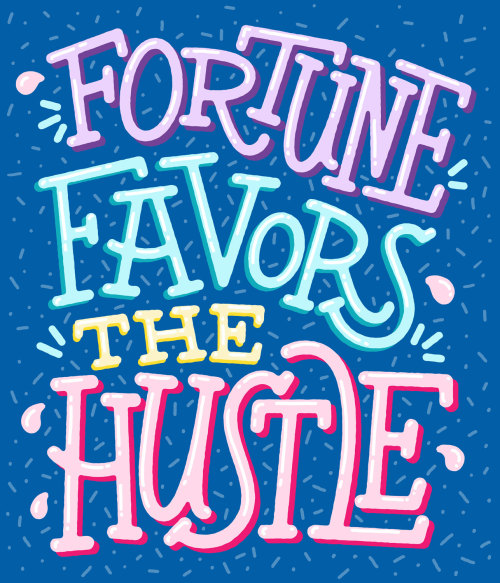133 posts
Latest Posts by theedsagroup-blog - Page 3
Never cut a tree down in the wintertime. Never make a negative decision in the low time. Never make your most important decisions when you are in your worst moods. Wait. Be patient. The storm will pass. The spring will come.
Robert H. Schuller (via quotemadness)

#E8E0EC

Lose your debt instead!
On an Average Day, What Do You Spend Money On?
On an Average Day, What Do You Spend Money On?
It’s striking that one in three Americans claim to keep a monthly budget, but most people don’t know how much they spend on a single day. Now, some of us use mobile apps for budgeting, but for those who don’t, how much do you think you spend? Let’s go through a day in an average person’s shoes. Transportation takes a huge chunk out of our wallets. In a year, the second most expensive expenditure…
View On WordPress
How to Thrift Like Macklemore
How to Thrift Like Macklemore
http://www.stumbleupon.com/su/8bFXVr/:1FfvRz1tJ:noOtxUy@/abeautifulmess.typepad.com/my_weblog/2011/09/elsies-thrift-tips.html
View On WordPress
Human beings are works in progress that mistakenly think they’re finished. The person you are right now is as transient, as fleeting and as temporary as all the people you’re ever been. The one constant in our lives is change.
Daniel Gilbert (via fyp-psychology)
Having Dogs without Petty Costs
Having Dogs without Petty Costs
It shouldn’t surprise anyone that raising a dog is fulfilling, albeit expensive. We don’t get dogs because they’re cheap, we get them because we love them. Well, we should also like good deals. Here’s to making your life, and your pup’s a little bit easier. Doggy Doors Done Right Get a reasonably priced screen door with two small screened panels at the bottom. Remove the bottom panes to place…
View On WordPress
You can’t undo the past… but you can certainly not repeat it.
Bruce Willis (via quotemadness)
The Checklist Investor Crushing the Market by 1100%

By Jae Jun
What You’ll Learn
Mohnish Pabrai’s uniquely not so unique investment framework
How Pabrai crushes the market with checklists
Pabrai’s investment advice
Recommended books on Checklists
With an outperformance of 1100% compared to the market since inception in 2000, Mohnish Pabrai is a classic value investor and household name.
I heard about Mohnish around the time he and Guy Spier famously won a lunch with Warren Buffett for $650,100 in 2008.
One of the reasons why we like Mohnish Pabrai at Old School Value is that he is the perfect model of what ordinary people can do when they find something that they love and have the plan, perseverance and discipline to do it.
If you don’t know what I mean, here’s a quick background on how Pabrai became an investor.
Mohnish Pabrai: The Relatable Super Investor
Mohnish Pabrai is an Indian born investor, came to the United States to attend Clemson University in North Carolina in 1983.
He didn’t major in finance.
Pabrai was an engineery by trade and running a successful IT business and never heard of Buffett until he was 30. In fact, the first investor Pabrai discovered was Peter Lynch, not Buffett.
Anyway, here’s the part of the story that resonates with me and a lot of other DIY investors.
I found very strange was how you can have an entire industry which does not function with a solid framework. To me, it is like people doing brain surgery by just ‘winging it’.
That is how I saw mutual funds work – they were just winging it, or they come up with any nuance or ‘flavor of the day’ they want to pursue.
I had a thought that if novices like me simply adopted Buffett’s approach and invested in the equity markets with a concentrated portfolio, etc. that I was likely to do better than most of the industry professionals.
So I said it was worth testing this hypothesis out. I was lucky at the time in 1994; I had about $1 million in cash. I had just sold some assets of my business and I decided to go ahead and manage that in a Buffett-style concentrated portfolio, buying things I understood, etc. That is how I got into value investing.
He was an immigrant, didn’t have any formal investing training and realized how nonsensical the investment industry was.
Starting with his own money to launching a fund, it’s a good thing Pabrai “got” into value investing.
Pabrai’s long-only equity fund has returned a cumulative 517% net to investors vs. 43% for the S&P 500 Index since inception in 2000. An out-performance of 1,103%. - H/T Valuewalk.
Did he have a unique process to achieve such returns?
No.
If you go through the material available on Pabrai, you’ll realize what a diehard Buffett and Munger fan he is. From an old interview in 2008, he said that he read Poor Charlie’s Almanack 7 times.
And if you listen to any of his interviews, it’s full of Buffett and Graham lessons.
Monish Pabrai’s Investing Philosophy
In a nutshell, Pabrai’s investment framework is:
focus on long-term investing and the power of compounding based on Warren Buffett’s “moat-based,” Graham’s “Special Situations” and Munger’s “Latticework of Mental Models” approaches to investing.
Pabrai lays out his framework in his book The Dhando Investor (highly recommended in my must read book list) where he discusses the Dhando framework.
Focus on buying an existing business
Buy simple businesses in industries with an ultra-slow rate of change
Buy distressed businesses in distressed industries
Buy businesses with a moat
Bet heavily when the odds are overwhelmingly in your favor
Buy businesses at big discounts to their underlying intrinsic value
Look for low-risk, high-uncertainty business
Nothing new.
Just super common sense along with application of Buffett’s timeless principles.
The difference is that he stuck with it while his peers were rushing to find the next shiny object, the next big thing.
One of the takeaways he got from his lunch with Buffett was this very idea when Buffett asked him:
‘Would you prefer to be the greatest lover in the world and be known as the worst, or would you prefer to be the worst lover and be known as the greatest?’ And [Warren Buffett] said, ‘If you know how to answer that correctly, then you have the right internal yardstick.’
Mohnish Pabrai: The Checklist Investor

Pabrai probably talks about checklists the most (along with Guy Spier).
He is known to have page an intense set of checklists accumulated throughout his investment career. He stated that he doesn’t talk about too many specific parts of his checklist because it is his competitive advantage.
Makes sense.
However, he provides plenty of high level information on how you should build a checklist and the types of things he looks at.
Here’s a one of his checklist presentations you should check out and a quick summary of how Pabrai and Munger use checklists from The Checklist Manifesto .
It just comes down to putting in the time to create your own checklist.
Instead of constantly being on the lookout for new stocks to buy, take a step back and go over your past mistakes.
Pabrai simply started making his checklist by studying the mistakes of Warren Buffett and as of 2013, he had 97 or 98 broad questions on his checklist that takes about 15-20 minutes to run through.
He also saw that most of the mistakes made by the guru investors fell into five groups.
valuation
leverage
management and ownership
moats
personal biases
A good starting point, if you don’t use a checklist, will be to focus on these five parts.
So for example, Berkshire Hathaway lost money on Dexter Shoes, when they bought Dexter Shoes. A question that comes up on the checklist is, is this business a business that can be affected negatively by foreign competition? Can it be affected negatively by low-cost labor in other countries? Those came out of, for example, the Dexter Shoes example. - source
Since I put the checklist in place, in 2008 till today, we have made I think more than 30 different investments in the last five years or so. We only have so far, we invested about $200 million. We’ve already exited a bunch of positions and we’ve exited with about $500 million on those positions, and we only lost money on two investments. And the total amount of money we lost from those two investments is less than 5 or 6 million dollars. And I think a large part of that is the checklist significantly brought down the error rate.
If you need some guidance on how to build a checklist, or want a template to start, I have a checklist collection that I share with people
If you want to make it easier on yourself, you can download a collection of checklists that I’ve compiled. Just click the image below and enter your email to get the download link.
Mohnish Pabrai’s Holdings
What you also have to know about Mohnish Pabrai is that he has nerves of steel and has conviction in his own ideas.
He only holds seven total positions total with his biggest position being Fiat Chrysler, followed by GM warrants making up close to 70% of his portfolio.

A lot of people on boards on the internet criticize Pabrai for continually averaging down on ZINC – which goes back to that lover analogy Buffett told Pabrai and Spier during lunch.
Everyone thinks he is a loser for holding and buying ZINC, but he believes otherwise.
The other thing to remember is that you also have to put things into context.
Ridiculing an investor like Pabrai by isolating ZINC is ridiculous. Whether it’s a mistake or not is yet to be seen. Everybody is going to make mistakes, but the key is whether you make a mistake with your 48% holding or your 5% holding.
Must Read Books Related to This Article
The Dhandho Investor: The Low-Risk Value Method to High Returns
The Investment Checklist: The Art of In-Depth Research
The Manual of Ideas: The Proven Framework for Finding the Best Value Investments
Further Reading and Related Links
Mohnish Pabrai, Guy Spier and Michael Shearn on investment checklists
How Mohnish Pabrai crushed the market by 1100% since 2000
Pabrai Funds Annual meeting notes 2014
Making Heads and Tails of Mohnish Pabrai
Mohnish Pabrai 2015 Investor Meeting
Pabrai’s Checklist presentation
Valuewalk Pabrai resources
A checklist for investors
How Mohnish Pabrai and Charlie Munger use a checklist
Checklist investing and how to avoid errors and learn from mistakes
Interview and Talk by Mohnish PabraiAdditional Articles I Recommend
The Education of a Value Investor
7 Low Risk Investments Strategies You Should Apply Today
15 Words of Wisdom on Finding an Edge
My Answers to 12 Important Investing Questions
10 Investing Principles Every Value Investor Should Live By
The Finest Collection of Value Investing Checklists
Get our free newsletter , follow us on Twitter, Yahoo Finance/Tumblr, like us onFacebook, connect with us on Linkedin
[Photo Credit: Alan Cleaver, Flickr]


(via Why I No Longer Buy Designer Jeans)
Why It's Important to Save Now
Why It’s Important to Save Now
View On WordPress
New Years Resolutions That Save You Money
New Years Resolutions That Save You Money
Okay, so we could all use a little help when it comes to getting our finances in order. It’s always a struggle. But two words: New. Year. It’s time to makes some changes that could potentially keep you from getting overwhelmed. Keep a budget. It is seriously important to keep a budget and stick to it. A good budget is the foundation to financial security. Take as long as you need to work on it.…
View On WordPress
You don’t have to live forever, you just have to live.
Natalie Babbitt (via quotemadness)
How to Make Good Habits in the New Year
How to Make Good Habits in the New Year
After the brittle wind of the holidays, or budget is really just a bag of bones. Many of us start the new year with a proactive mindset; this year, our finances will be in order. This next year won’t be so bare skinned as this year. That’s what we say. However, we know we’re human, and in the back of our minds we wonder how we can just keep it up for more than that proactive month. After all, if…
View On WordPress
![[image Description: Drawing Of A Fried Egg Saying “You’re Eggcellent!” In A Yellow Speech Bubble.]](https://64.media.tumblr.com/f6a772ad1df8bd0d7abb670ba35b849b/tumblr_nyyohgtxzL1rpu8e5o1_500.png)
[image description: drawing of a fried egg saying “You’re eggcellent!” in a yellow speech bubble.]
How do we change the world? One random act of kindness at a time.
Morgan Freeman (via quotemadness)

Accurate

With the 2016 spring semester coming up soon, I have some tips on how you can save money on textbooks!
1. Find out if you really use the textbooks in class
The easiest way to do this is to ask students who have had your professor before, or if you don’t know anyone, look at ratemyprofessor.com to see what people say about using the textbook.
If you don’t need it, don’t buy it or rent it! If you start class and find out you do need it, you can always buy it later!
2. See if your university library has textbooks you can use for free
Most universities and colleges have textbooks available for use, but you usually have to stay in the library with them and have a time limit for using them
If you only need to the textbook for short periods of time, then this is the perfect solution! You can access the textbook without having to spend any money.
If you really do need the textbook all the time, here’s what you do:
1. Find out what textbooks or workbooks you need for your classes!
How you find out what textbooks you need varies for each college and university. If you know how to find it, do so.
The easiest way is to find out is to go to your college bookstore AFTER you have registered for classes, and ask them to print out a list of required materials for your courses.
They will probably need your student ID or student ID number to access your schedule, so make sure you know it!
2. Write down the title, edition, and ISBN number of the textbook
The ISBN number is the best way to find the correct book online
See if there are any online access codes you need to buy with the textbook or need to buy separately
If it says you need the latest edition, e-mail your professor and ask if you can use previous editions, and if so, which ones (often there’s barely a difference between editions)
3. Use booksprice.com to find the cheapest price for the book you need!
Using this website saved me over $300 on textbooks this semester!
You enter the textbook ISBN, and it shows you the cheapest price from every site on the internet.
It also says if the price is for buying it or renting it
I always recommend renting it unless the book is for a major-specific course and might be useful in the future
Here’s what the results page looks like when you look up a textbook:

(because this is the newest edition, there are not any inexpensive ones available to buy)
You’re done! (and you’ve saved a ton of money)
Hope this helped, send me any questions in my ask!
Love, Study-Buddhy
True success depends on your contentment.
The Blueprint (via zikkreal)


no handouts, just hustle #hydratethehustle #vitaminwater #creatrs exclusive art by josh lafayette

Here is the world. Beautiful and terrible things will happen. Don’t be afraid.
Frederick Buechner (via quotemadness)


Thought I’d make another since the first one was so much fun! Cute, festive lil’ totodile wishes you happy holidays!
Find me on Instagram | Twitter | Behance
Whatever you decide, don’t let it be because you don’t think you have a choice.
Hannah Harrington, Saving June (via wordsnquotes)

- only grunge posts -
Twelve Ways to Save Through the Holidays
Twelve Ways to Save Through the Holidays
One of the biggest moderators of our stress during the holidays is our finances. For good reason. We’ve compiled a guide of tips and tricks for you to apply to lessen the blow. This one may be coming a little late, but try not to spend 1.5 percent of your household annual income. This was suggested by Practical Money Skills for Life. Remember that there are hidden costs in present giving, such as…
View On WordPress

Pattern I made up yesterday. So much red for a red hater like me. :)
2015 has been a year of lessons.
Unknown (via deeplifequotes)